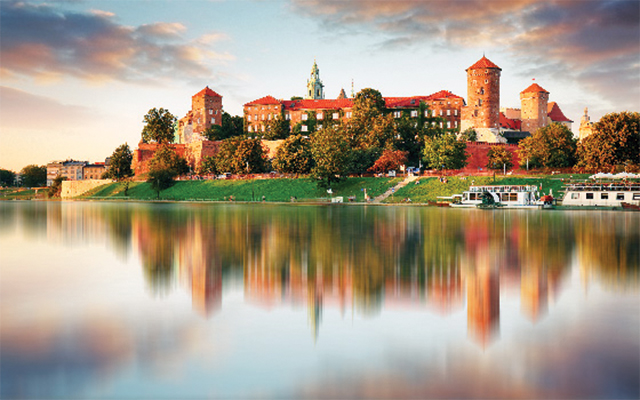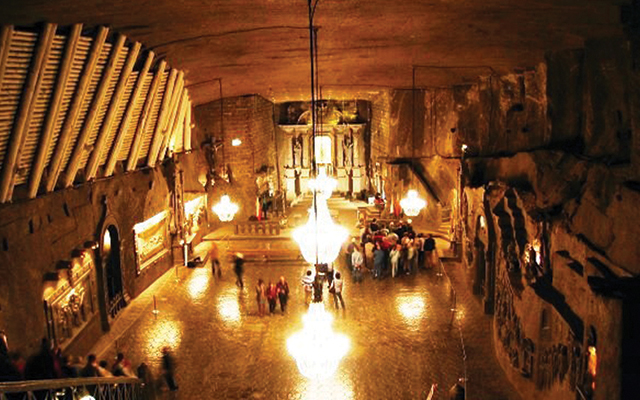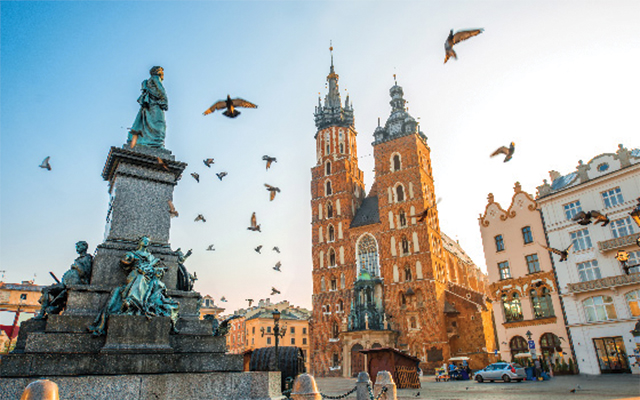
Wawel Hill and the Tale of Smok Wawelski
The Dragon of Wawel Hill is a famous figure in Polish folklore. This legend takes place in Krakow during the reign of its legendary founder, King Krakus.
There are a number of variations of this legend, but they always start the same way - this dragon terrorised the people of Krakow, leaving a path of destruction across the countryside, killing the peasants, pillaging their homes and devouring their livestock. Warriors came from far and wide to try and defeat the creature, but none of them succeeded.
King Krakus was so desperate for his kingdom to be rid of the beast, he offered his daughter’s hand in marriage, and half his kingdom, to anyone who could defeat the dragon.
A young cobbler, named Skuba, came up with a cunning plan. He stuffed a lamb with sulphur and left it outside the dragon’s cave. The dragon took the bait and ate the lamb. The sulphur set his stomach alight and he became so thirsty, he began to drank the waters of the Vistula River until he burst.

The Wieliczka Salt Mines and the Legend of Saint Kinga
Princess Kinga of Hungary was due to marry Boleslaw V the Chaste, Prince of Krakow.
Her father, Béla IV of Hungary, asked his daughter what she would like to take as part of her dowry, as a present for her new country. She replied that she did not want to take any of the usual items, such as gold or jewels, as they only cause misery. Instead, she asked her father for salt.
Her father took her to a salt mine in Maramaros. Suddenly, she surprised everyone by throwing her engagement ring into one of the shafts. She then gathered together some of the best miners in Hungary and asked them to follow her, before leaving for Poland.
Upon her arrival in Poland, she asked the miners to dig a deep pit until they came upon a lump of salt. When they broke that in two, they discovered the princess’ engagement ring – and that’s how salt came to Poland, according to the legend.

St. Mary’s Basilica at Rynek Glowny and the legend of St. Mary’s Towers
As you stand underneath the towering structure of the St. Mary’s Basilica at Rynek Glowny, you’ll notice the uneven height of the two Gothic towers that dominate its façade.
According to legend, this is due to the two brothers who built them.
Under the reign of King Boleslaus the Modest, in the 13th century, a decision was made to add two towers to the church and two brothers were commissioned for the task of building them.
However, when the younger brother realised that his tower was much shorter, he killed his brother in envy, and the construction halted.
But he was wracked with guilt and, on the day the church was consecrated he pierced his own heart with the same knife he’d used to kill his brother, toppling from the top of his tower to the ground below. The knife now hangs in the gate of the Cloth Hall, as a reminder of these tragic events.
Feeling inspired?
For more information on our history trips to Krakow, or to request your tailor-made quote, please don’t hesitate to contact us.